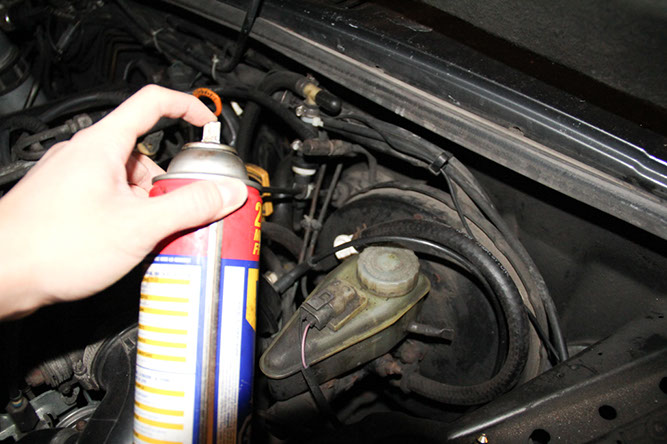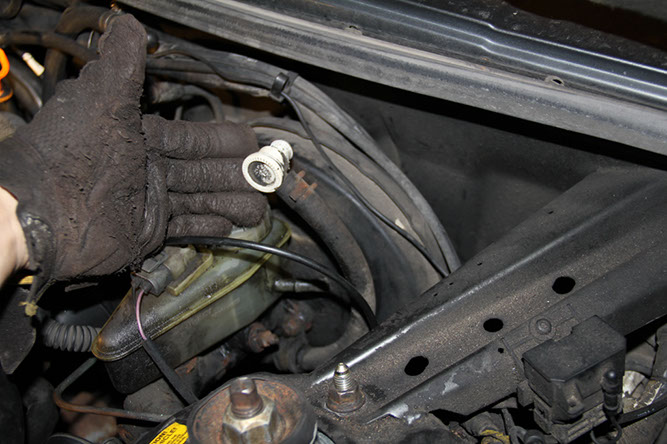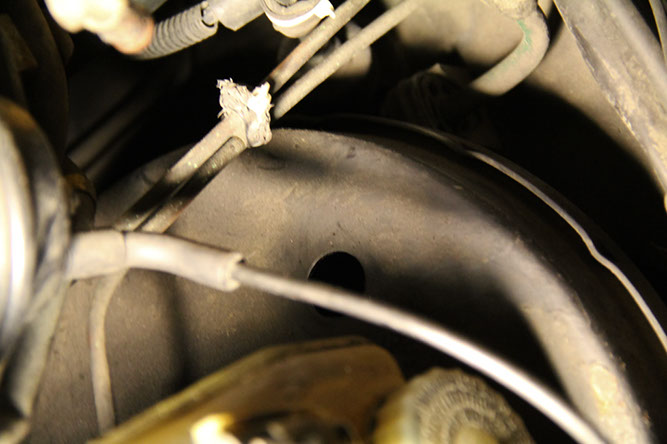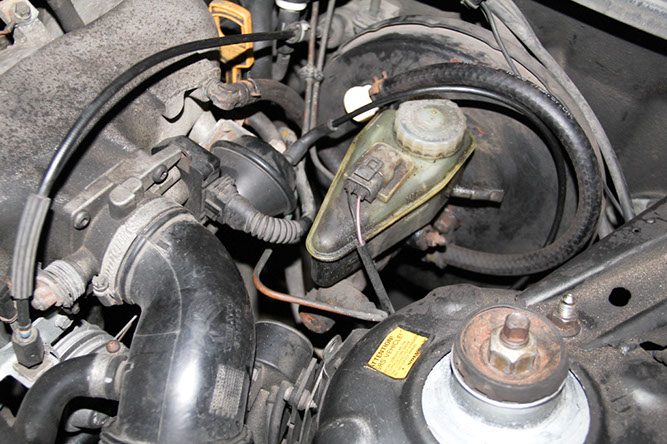If you have been experiencing poor braking performance in the form of a stiff pedal, don’t immediately think you need a new master cylinder or brake booster. The simple and cheap replacement of the one-way brake booster valve could help remedy these braking problems. My Volvo 940 recently required a look at it's brake booster due to a hard pedal.
A typical brake booster system will require 14 in-HG in order to function properly. When a car is near idle, the engine vacuum will be at its highest ,trying to suck in air through smaller throttle openings and/or idle air control valves. However, when you accelerate, vacuum will be reduced as the engine itself is gulping more air and the throttle plate opening reduces restrictions in the intake manifold. The one-way brake booster valve will close under acceleration while opening and allowing vacuum at low rpms.
Try blowing through the other side
Here’s a quick test to see if you need a new brake booster one-way valve. Remove the line and valve from the intake manifold and blow into it from the side of the intake manifold hose. If you can easily blow through, your valve needs replacing. Second, if you can’t blow through, try blowing through on the other side, the side that just came out of the brake booster. You should be able to blow through easily. If not, then you will need a new valve. In some cases, it may be just to replace the valve for preventative maintenance.
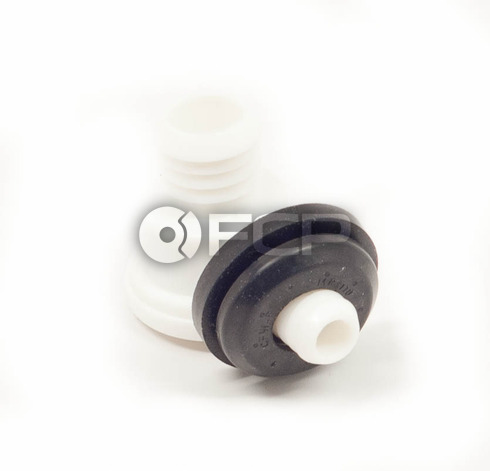
Parts needed:
- Volvo Brake booster check-valve (Bosch 270596)
- Hydraulic hose: 8mm ID, 2ft long. Note: Fuel line will NOT suffice. You can find this part at your local automotive parts store, or even ask FCP to look for it! In most cases, you will either not be able to reuse the old vacuum hose, or it will be old and falling apart that you will want to replace it.
Step 1: Remove one-way valve
Spray some WD-40 on the rubber O-ring. Twist the valve to loosen it and pull out with your fingers. Try to avoid using a flathead screwdriver as you could possibly damage your brake booster.
Step 2: Route brake line out from clips and intake manifold. Route the brake line out from the clip, and pull it out from the intake manifold. In my case, I had to cut the hose off the intake manifold connection.
Step 3: Clean the hose barb on the intake manifold to ensure a tight fit on the new hose.
Step 4: Place o-ring into hole of brake booster. Re-route the new hose into the intake manifold and place the new o-ring in the hole on the brake booster.
Step 5: Install new check valve and hose. Use some WD-40 to ease installation, and push the new one-way valve into the o-ring slowy, making sure you don’t accidentally push the o-ring into the brake booster.
Start up your car, and pulse your brakes a few times. If you’re lucky, you’ve just solved your hard brake pedal problems and you don't need to worry about getting a new brake booster. If you still have a stiff pedal, keep looking for vacuum leaks before plunging the big cash for new braking components.

